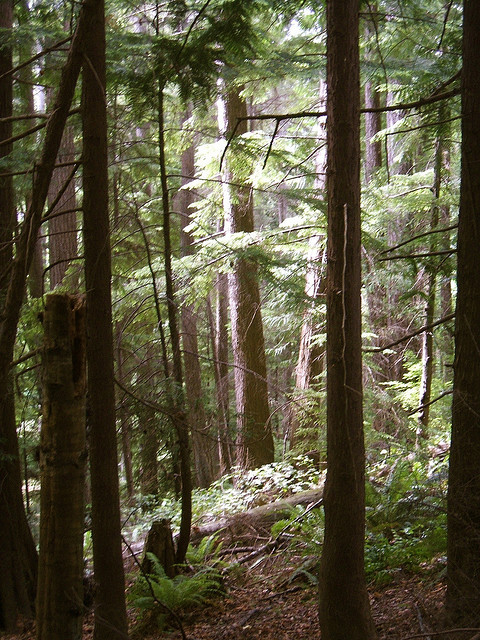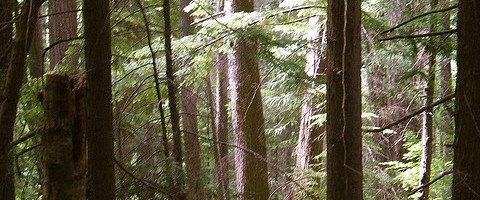
Old-growth forests showed no difference in recruitment rates for new trees due to the lack of unoccupied canopy and ground space. (Image credit: Glenn Scofield Williams, flickr.com)
A study of forests in Western Canada has revealed the forces shaping and changing the make up of a forest over time, are primarily competition among trees, with climate playing a secondary role.
Researchers studied data collected between 1958 and 2009 in 1,680 forest plots from British Columbia to Manitoba. They found that competition is the primary factor influencing tree mortality, growth, and recruitment of new tree species.
Analysis of the data showed that tree mortality increased and growth rates decreased regardless of forest age (new vs old-growth), location or size. The researchers also found that the age of the forest, associated with availability of canopy space and ground nutrients, affected the growth of new trees. New growth forests experienced a rapid decline in recruitment rates and mature forests experienced a slower decline, however no significant change was detected in old-growth forests.
This data, combined with temperature and precipitation records, led the researchers to conclude that competition is more important in determining forest dynamics than climate.
Original research paper published in PNAS on March 16, 2015.
Names and affiliations of selected authors

